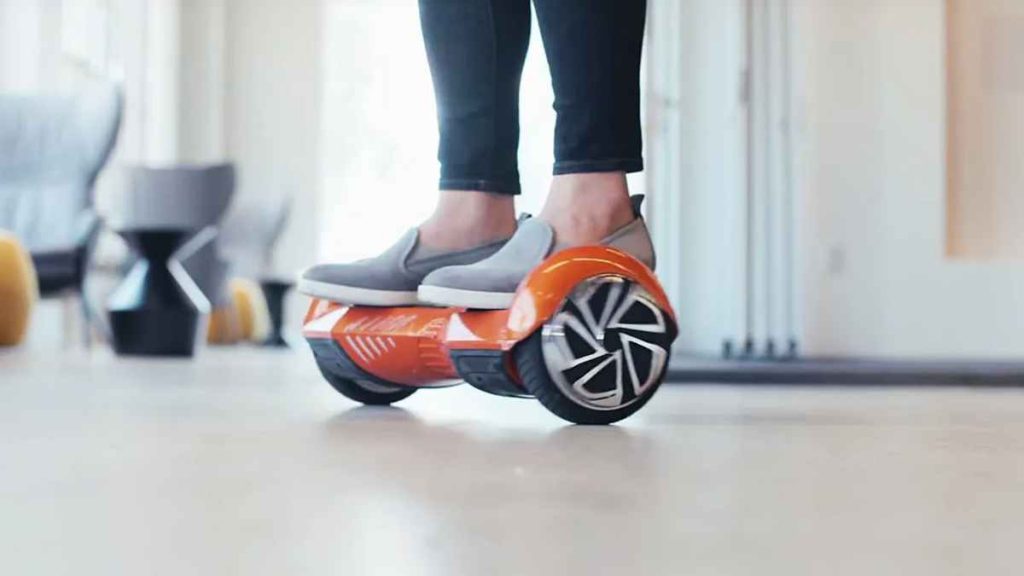We’ve all at one time been fascinated by hoverboards. They look fun, no doubt about that. But how do they even work? They look like something out of science fiction.
You’re not alone if you think that they are a technology marvel.
So, in all their random glory, how do hoverboards even work? We explore the science behind hoverboards.
The Basics of a Hoverboard Working
We can say that a hoverboard is basically a self-balancing two-wheeled scooter. The keyword here is ‘self-balancing.’ But really, how do hoverboards self-balance? What trickery does the Swagtron hoverboard use?
The answer to the hoverboard’s control and balance is in the combination of gyroscopes, accelerometers, and microprocessors. How they combine to create a feeling of magical floating is science and, of course, a healthy dose of randomness fun.
Take your hoverboard to the next level with these ultimate go-kart attachments! Transform your ride into a thrilling adventure.
Gyroscopes in hoverboards
Gyroscopes are the little spinning discs on hoverboards, their role is balance. These spinning discs maintain balance by adjusting the speed of the wheels based on the changes in the board’s angle.
Gyroscopes work with tilt sensors installed on the wheels and relay the information to the logic board. The logic board tells the motor how fast it should spin and in what direction. The idea is to keep you stable and upright.
In most cases, every foot pad has switches underneath. They’re pressure-sensitive.
Every foot pad has infrared (IR) light and an IR sensor. As long as the sensor detects the lights, the logic board will direct the motor to stay still. The light remains on when your feet are flat.
However, the switch will turn off the LED when you lean forward. The pressure on the front switch blocks the connection between the IR light and the sensor. With this disruption, the gyroscopes tell the logic board where to spin the wheels depending on where you’re leaning.
And since motors are independent of each other, they can easily do circles.
In a nutshell, you move right when the left switch is activated and left when the right switch is activated. But to move forward, both switches must be activated.
Accelerometers
Gyroscopes are aided by tiny sensors that detect alterations in the direction and speed of the hoverboard. These are accelerometers, and their role is to send data to the microprocessor, or the logic board, which determines the hoverboard’s speed and direction.
Talking of speed, hoverboards also have speed sensors that calculate the revolutions per minute (RPM). They detect how fast you move and send the data to speed control boards and gyroscopes.
Something interesting: did you know that accelerometers have a military background? Yes, these were initially invented to track missiles. Weird, right?
Hoverboards microprocessor/ logic board
There’s no way a complicated hoverboard operation would function without a little computer. These are the brains that process the various data input from the sensors for split-second decisions. Balancing is not a random activity. There must be some computation involved in real time for the best action.
Hub motors
Many hoverboards will have hub motors inside the wheel. These motors respond to the signals sent by the tilt and speed sensors. The more you lean forward, the faster the hoverboard will move.
Indeed, the science behind hoverboards is much more than hub motors, gyroscopes, accelerometers, and logic boards. The wheels, the battery, chargers and a host of other components work in concert for a smooth, effortless ride.
Looking for a reliable charger for your hoverboard? Look no further! We’ve compiled a list of the best chargers for hoverboards.
But even with all this technological innovation, there’s still a certain element of randomness to hoverboards that science can’t explain.
Maybe it’s how the wind feels against your face as you glide down the street. The adrenaline. The feeling of freedom as you move effortlessly through your neighborhood or park.
Maybe it’s the sheer joy of riding on something that feels like it shouldn’t be possible. A science marvel. Whatever it is, there’s a certain magic to hoverboards that science can’t explain. And that’s okay. Sometimes, it’s good to have some randomness in our lives, to remind us that sometimes the most wonderful things can come from the most unexpected places.
But apart from the fun of it all, hoverboards have an element of workout. They work the core muscles – the abdominal and back muscles. Could a workout be this much fun?

